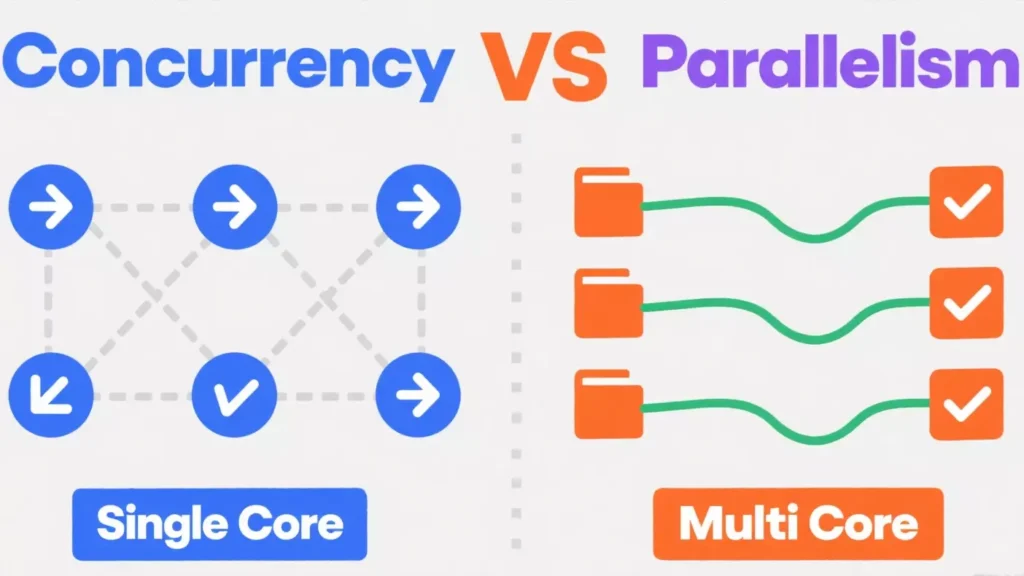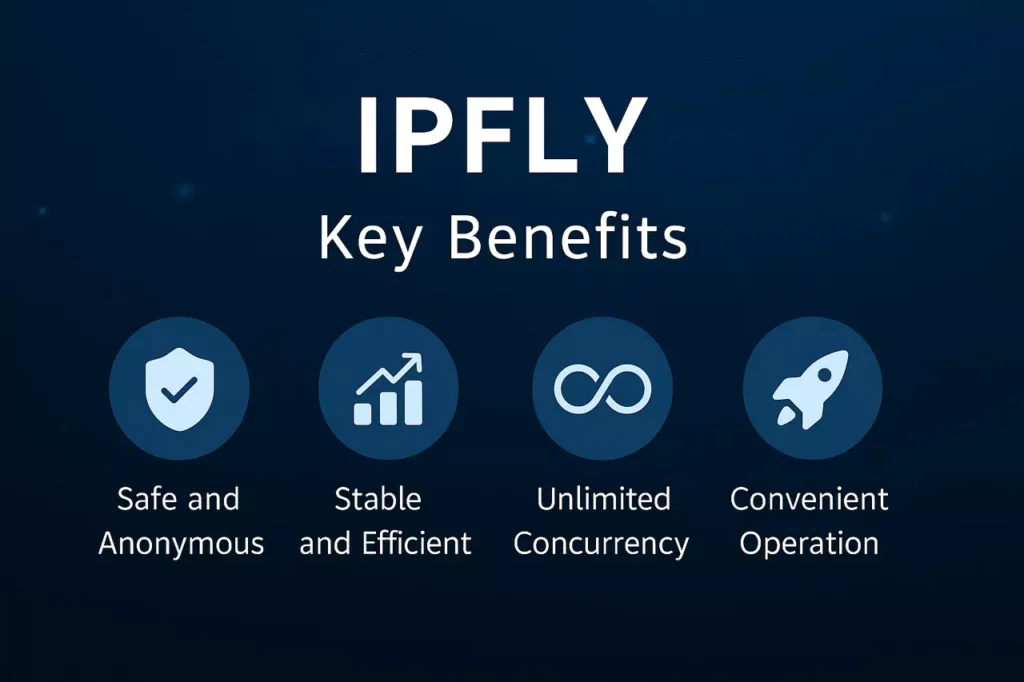In today’s competitive business environment, application performance and scalability are critical factors that can determine success. Two fundamental computing concepts—concurrency and parallelism—play key roles in enhancing how software applications handle multiple tasks efficiently. Understanding these concepts and leveraging the right technologies can give businesses a significant edge, especially when paired with high-quality proxy services.
This article explains the commercial benefits of concurrency and parallelism, compares their impact on cloud computing and proxy usage, and highlights how IPFLY’s technology infrastructure supports efficient concurrent and parallel processing to help businesses scale faster and more reliably.

Understanding Concurrency and Parallelism
Concurrency and parallelism are often used interchangeably, but they represent different approaches to task management in computing.
- Concurrency is the ability of a system to manage multiple tasks at the same time by interleaving execution. Tasks may not run simultaneously, but are structured so that they progress without blocking each other, improving responsiveness.
- Parallelism involves executing multiple tasks literally at the same time, often by utilizing multiple processors or cores. It is especially beneficial for comput-intensive operations that can be divided into smaller independent parts.
Both techniques aim to optimize resource usage and reduce overall execution time, but their applications and advantages differ depending on the workload.
Commercial Benefits of Concurrency and Parallelism
Improved Scalability
Concurrency allows applications to handle many user requests or operations without delays, making it ideal for web servers and real-time systems. Parallelism enhances scalability by speeding up heavy computations like data processing or machine learning.
Enhanced Performance
By leveraging concurrency, applications stay responsive even under high demand. Parallelism boosts throughput by running multiple calculations simultaneously, reducing processing time dramatically.
Optimized Resource Utilization
Concurrency ensures CPUs are not idle waiting for slow operations like I/O. Parallelism exploits multi-core processors and GPUs, fully utilizing hardware capabilities.
Cost Efficiency
Efficient concurrency and parallelism reduce the need for additional hardware and cloud resources, cutting operational expenses while maintaining high performance.
Concurrency and Parallelism in Cloud Computing and Proxy Usage
Cloud platforms rely heavily on both concurrency and parallelism to deliver scalable services. For example, cloud servers manage thousands of simultaneous connections (concurrency) while performing large data analyses using parallel processing.
Proxy services, like those offered by IPFLY, benefit greatly from these techniques. Efficient concurrency allows proxies to handle multiple user requests without lag, while parallelism accelerates tasks such as data scraping or ad verification by distributing workloads across many IP addresses and servers.
How IPFLY Supports Efficient Concurrency and Parallelism

IPFLY provides advanced proxy solutions designed to optimize concurrent and parallel computing tasks:
- Dynamic IP Rotation: IPFLY’s proxies rotate IP addresses dynamically, supporting high concurrency by enabling numerous simultaneous connections without IP bans.
- Robust Infrastructure: The multi-server, multi-core architecture behind IPFLY’s services facilitates parallel processing of tasks like web scraping or data mining.
- Customizable Proxy Pools: Businesses can select proxy pools suited for parallel workloads, maximizing efficiency when performing data-heavy operations.
By integrating IPFLY’s proxies into applications, companies can accelerate their concurrent and parallel processing workflows, improve performance, and reduce operational risks.
Choosing the Right Model Based on Workload
Determining whether concurrency, parallelism, or a combination of both is suitable depends on specific business needs:
- Use concurrency when: Your application requires high responsiveness with many simultaneous tasks that often wait on external operations (e.g., web servers, real-time chat apps).
- Use parallelism when: Your workload involves CPU-bound tasks that can be split and run simultaneously (e.g., video encoding, AI model training).
- Use both when: Handling complex systems like cloud services or big data platforms that benefit from efficient task management and high-speed computations.
Case Studies: Performance Improvements with IPFLY Proxy Support
- E-commerce Platforms: Handling thousands of concurrent user sessions with fast page loads and secure transactions by combining concurrent proxy connections with parallel backend processing.
- Digital Marketing: Running parallel ad verification campaigns through multiple proxy endpoints to speed up data collection and analysis.
- Data Analytics Firms: Leveraging IPFLY’s proxy network to execute parallel data scraping tasks, dramatically reducing time to market for insights.
Conclusion

Concurrency and parallelism are critical tools for businesses looking to enhance application performance and scalability. Understanding their differences and how to apply them effectively is essential for modern enterprises, especially when leveraging cloud and proxy technologies.
IPFLY’s proxy solutions are specifically engineered to support both concurrent and parallel processing needs, providing dynamic IP management, scalable infrastructure, and customizable proxy pools. Integrating IPFLY’s services can help businesses accelerate their operations, improve responsiveness, and maintain secure, reliable connectivity.
Ready to boost your application’s performance? Explore IPFLY’s proxy services today to unlock the full potential of concurrency and parallelism in your business workflows.
Learn, share, and grow—join IPFLY on Telegram for ongoing updates.


